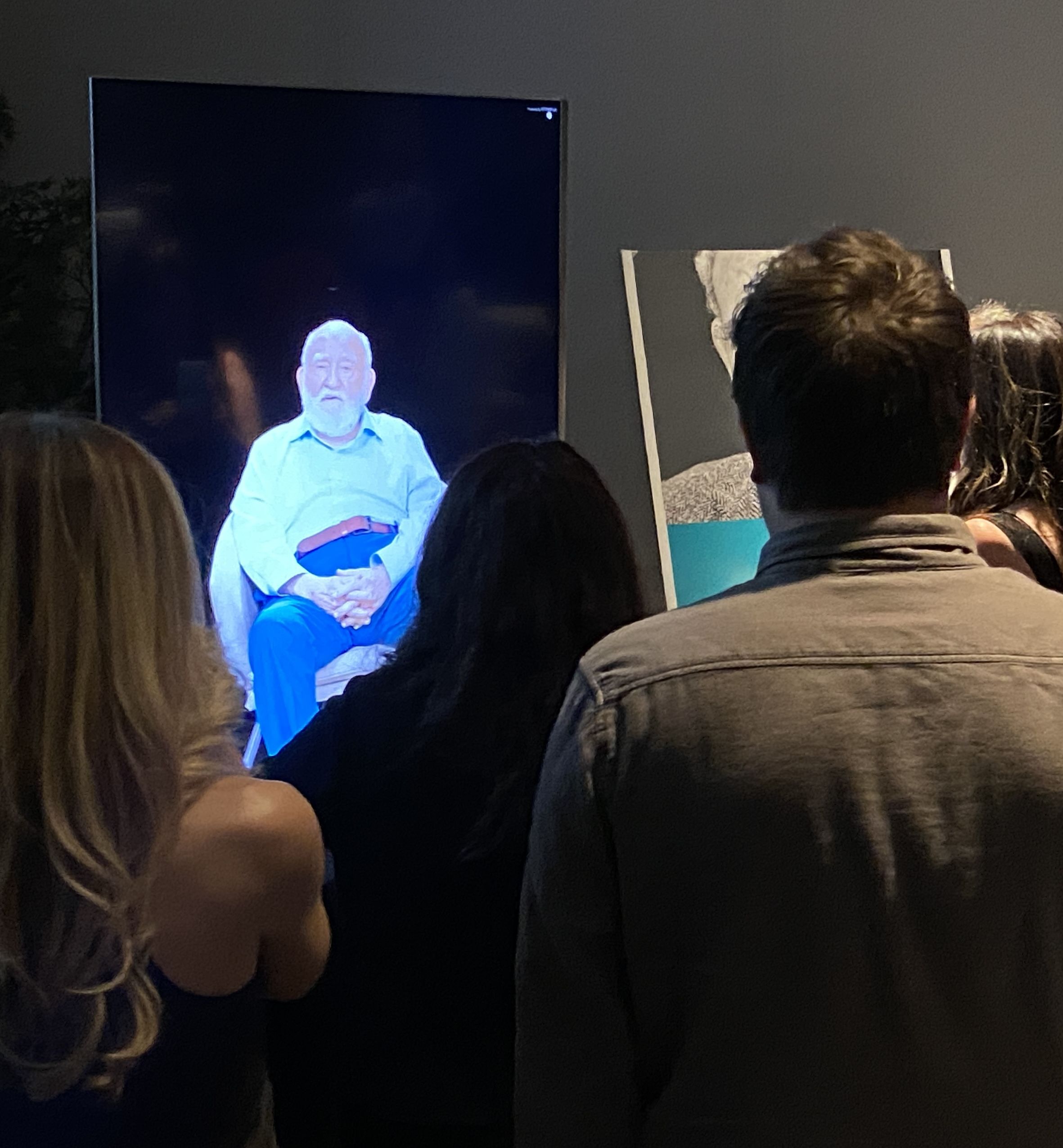New AI tools let you chat with your dead relatives

Creepy or cool? New products that let people keep relatives "alive" via AI are proliferating — offering, say, an interactive conversation with a recently departed dad who took the time to record a video interview before he passed.
Why it matters: As interest in genealogy and ancestry proliferates, these tools let families preserve memories and personal connections through generations — even giving children a sense of the physical presence of a relative who died before they were born.
- The tools are also being used to record the memories of noteworthy people: celebrities, Holocaust survivors, etc.
One such tool, StoryFile, was notably used at the late actor Ed Asner's memorial service, where mourners were invited to "converse" with the deceased at an interactive display that featured video and audio he recorded over several days before he died.
- "Nothing could prepare me for what I was going to witness when I saw it," Matt Asner, the actor's son, told Axios.
- The "Lou Grant" actor had used StoryFile to record an oral history; the product then employs AI to enable "conversations" based on subjects' answers to myriad questions.
At Asner's memorial, "many people just stopped by and asked a question or a couple questions," including Jason Alexander of "Seinfeld" fame, said Matt Asner, a TV and movie producer who now runs the Ed Asner Family Center, a nonprofit for people with special needs.
- "Actually, you can't just ask one question," he observed. "That's the great thing about it, is it draws you in — because the personality is there."
- Ed Asner, a former head of the Screen Actors Guild, had "covered everything — his childhood, work history, political history, family life," his son said.
- While a few mourners were "a little creeped out by it," the conversational video was "like having him in the room," Matt Asner said. "The great majority of people were just blown away by it."

The big picture: StoryFile is perhaps the most robust of a growing number of tools that help people create interactive digital memories of relatives. Many of them don't require the relative to be alive during setup.
- Amazon recently showed off an experimental Alexa feature that can read books aloud in the voice of a late relative, extrapolating from a snippet of that person's recorded voice.
- MyHeritage, the ancestry-tracing site, now offers "Deep Nostalgia," a tool for animating old-timey photographs of your relatives.
- HereAfter AI lets you record stories about yourself and pair them with photographs — so family members can ask you about your life and experiences.
- Microsoft has obtained a patent to create "chatbots" that mimic individual people (dead or alive) based on their social media posts and text messages, per the Washington Post.
How it works: With StoryFile, a user sits for a video interview and answers a series of questions.
- The company produces an archive that can be watched sequentially or used in a Q&A format.
- When a question is asked, the AI technology retrieves relevant video content to create an answer, picking out clips from the available footage.
The company was co-founded by oral historian Stephen Smith, who used to run Steven Spielberg's Shoah Foundation and specializes in preserving the memories of Holocaust survivors.
- "In its most optimal state, the idea of StoryFile is you should be able to speak to anyone, anytime, anywhere that you wouldn’t normally have access to," Smith tells Axios.
- "Maybe you don’t have access to grandma because she’s passed away, but you can still learn her story, feel a sense of connection to her."
- StoryFile is also building an archive of public figures who have sat for interviews. (Try asking a question of very-much-alive William Shatner.)
Between the lines: These types of programs are already growing familiar through deepfakes, science fiction, and rock concerts that use holograms to bring back dead performers like Buddy Holly.
- In the Netflix series "Black Mirror," a woman converses with a chatbot version of her late fiancé — and a grieving Canadian man did something similar with his dead girlfriend in real life, the San Fransisco Chronicle reports.
- Other examples: Carrie Fisher being brought back to life as Princess Leia; chef Anthony Bourdain's AI voice being used to narrate a posthumous documentary about himself.
What they're saying: "When we learn about some very sophisticated use of AI to copy a real person, such as in the documentary about Anthony Bourdain, we tend to extrapolate from that situation that AI is much better than it really is," said Amit Roy-Chowdhury, who chairs the robotics department at the University of California, Riverside.
- "They were only able to do that with Bourdain because there are so many recordings of him in a variety of situations."
- "In the future, we will probably be able to design AI that responds in a human-like way to new situations, but we don’t know how long this will take."
The bottom line: These kinds of memory-preservation programs "might change the way we collect history," as Smith put it.
- "We all have amazing stories to tell, and one of the big discoveries I’ve had in founding this company is how few of us truly understand the importance of our own story," he said. "We’re quite self-deprecating."